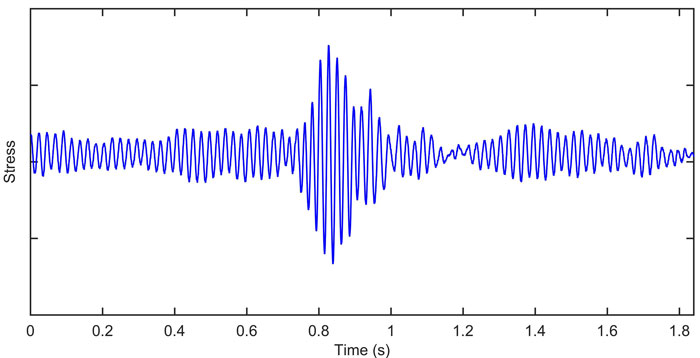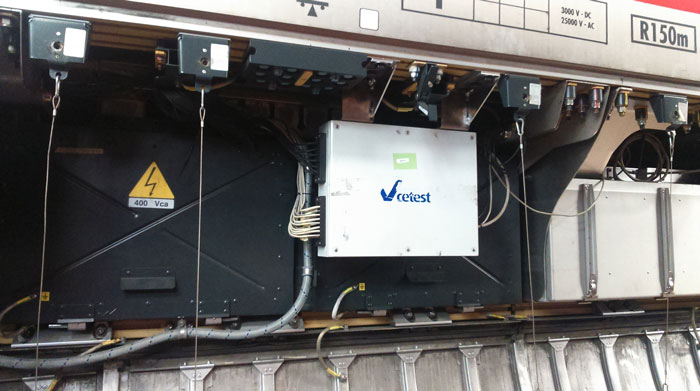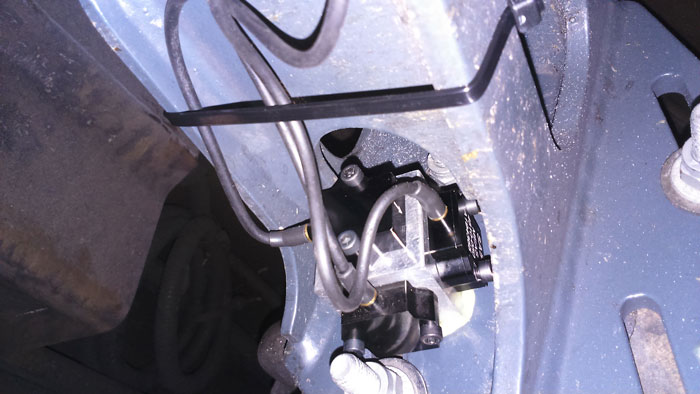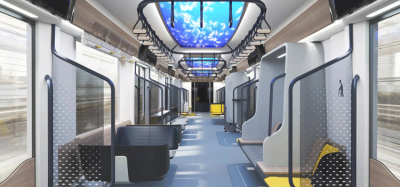Real data for bogie design and validation
Posted: 20 July 2017 | Lara Erviti (CETEST) | No comments yet
New methodology developed by CETEST enables the identification of bogie associated modal parameters with more accurate results than commonly employed methods, together with more simple performance. Lara Erviti, Test Engineer, explains more.


The application of experimental modal analysis in bogies opens up a broad range of opportunities. Firstly, knowledge of vibration modes can be a useful design tool from a dynamic behaviour point-of-view. The influence of bogie associated modes on the complete vehicle dynamic behaviour is well known – especially regarding instability issues – and therefore the information from these modes could be determinant in early design stages. Secondly, many of the failures experienced at bogie level are related with the bogie associated vibration modes. As an example, slightly damped modes lead to higher vibration levels that can eventually cause failure in some components installed on the bogie, such as signalling equipment.
Similarly, many of the fatigue failures in bogies are related to the presence of resonances in parts of the bogie’s structure. Future fatigue failures can therefore be avoided at an early stage with the correct identification of vibration modes. Furthermore, if a specific component has experienced fatigue failure after several years of service, the information collected with the identification of the vibration modes can help to improve the redesign of the element.
Modal analysis in bogies has many applications, but it has rarely been used, mainly because the techniques are expensive and not exhaustive.
Most of these techniques require special installations or equipment in order to simulate the excitation, which is costly.


Example of stress levels measured in a support attached to the bogie which presented a resonance at 43Hz (the stress levels are not shown due to confidentiality)
Moreover, these methods only analyse the bogie when it is stationary, which carries multiple disadvantages. Firstly, the dynamics associated with the wheel-rail contact will alter some of the vibration modes with the running speed. This explains, for example, why a vehicle is unstable above a certain running speed. Secondly, most of the bogies present a non-linear behaviour, which is usually associated with some suspension elements, such as non-linear dampers and crossbow suspensions. These phenomena cannot be studied if the test is performed in a stationary condition.
As aforementioned, it is essential to identify vibration modes that the bogie experiences under normal and service conditions. This is very difficult to achieve in static tests unless complex installations are employed, with high construction and maintenance costs. Furthermore, when the tests are performed in a stationary position, it is necessary to immobilise the vehicle while it’s being analysed, which in many cases might lead to additional time constraints.
Taking into consideration all these difficulties, CETEST has developed a new test and analysis methodology that allows the identification of the bogie associated vibration modes, using measurements collected when the vehicle is in service.


Example of the installation of the measuring equipment in the underframe
This method is based on the measurement of accelerations in multiple points on the bogie. The selected measurement points may differ depending on the modes under study. One advantage of the proposed method is that the excitation is real. It is the one received by the vehicle, caused by the wheel-track interaction. It does not require any special installation and, as a consequence, the cost associated with the test is drastically reduced. Furthermore, the test can be performed on any track and vehicle.
The only requirement for the test will be to run at a constant speed on a straight track. There is no particular limitation, even on the running speed, which means the test can be performed concurrently with other tests, or during commercial service.
As aforementioned, the number and position of the measuring points is determined by the vibration modes of interest. As an example, during a normal analysis, eight measuring points will allow the identification of the rigid solid modes. The inclusion of additional points will determine the vibration modes associated with local structural modes. If only certain structural modes are studied, fewer measuring positions can be used, which requires less wiring and means that smaller acquisition equipment can be used. It also makes it possible for the acquisition equipment to be installed in the vehicle’s underframe, enabling the test to be performed during normal commercial service. This is an important advantage, considering that the authorisations for performing tests during commercial service are usually easier to obtain than those required for specific tests outside of commercial service.
Another advantage of performing the test with the vehicle running on track is that tests can be performed at different running speeds. The bogie usually presents a non-linear behaviour due to the non-linearities introduced by some suspension components. The performance of the test at different running speeds allows different excitation levels to be assessed; enabling a more complete study of the bogie’s behaviour under different working conditions.


Example of accelerometers installed in a bogie
Moreover, the methodology proposed by CETEST defines some indexes to evaluate the accuracy of the identified modal parameters. These indexes are based on the capacity of the identified system to reproduce the measured response. This is an important characteristic of this methodology because most of the available actual methods used do not give any indication regarding the accuracy of the results.
CETEST has already successfully applied this method in different projects including metro vehicles, commuters and very high-speed trains. In conclusion, CETEST’s proposal is a test methodology with simple instrumentation, extensive information collected on different vibration modes, and no limitations regarding running speed or tracks, adding a known level of accuracy.
This CETEST methodology allows the identification of the vibration modes of a bogie, including both the rigid solid modes and the structural modes. These modes could provide a very valuable source of information for vehicle dynamics, components fatigue, and vibrations behaviour. CETEST methodology overcomes the difficulties presented by the techniques employed nowadays in the sector, resulting in a cost-efficient test that gives accurate results.


Lara Erviti has been a Test Engineer at CETEST since July of 2009. During the last five years she has lead a team specialised in modal analysis and running behaviour characterisation. Lara has a PhD in Applied Engineering from the University of Navarra and her main research area has been the application of operational modal analysis in the railway sector.
Issue
Related topics
Bogies & Wheelsets, Rolling Stock Components (Interior/Exterior)







